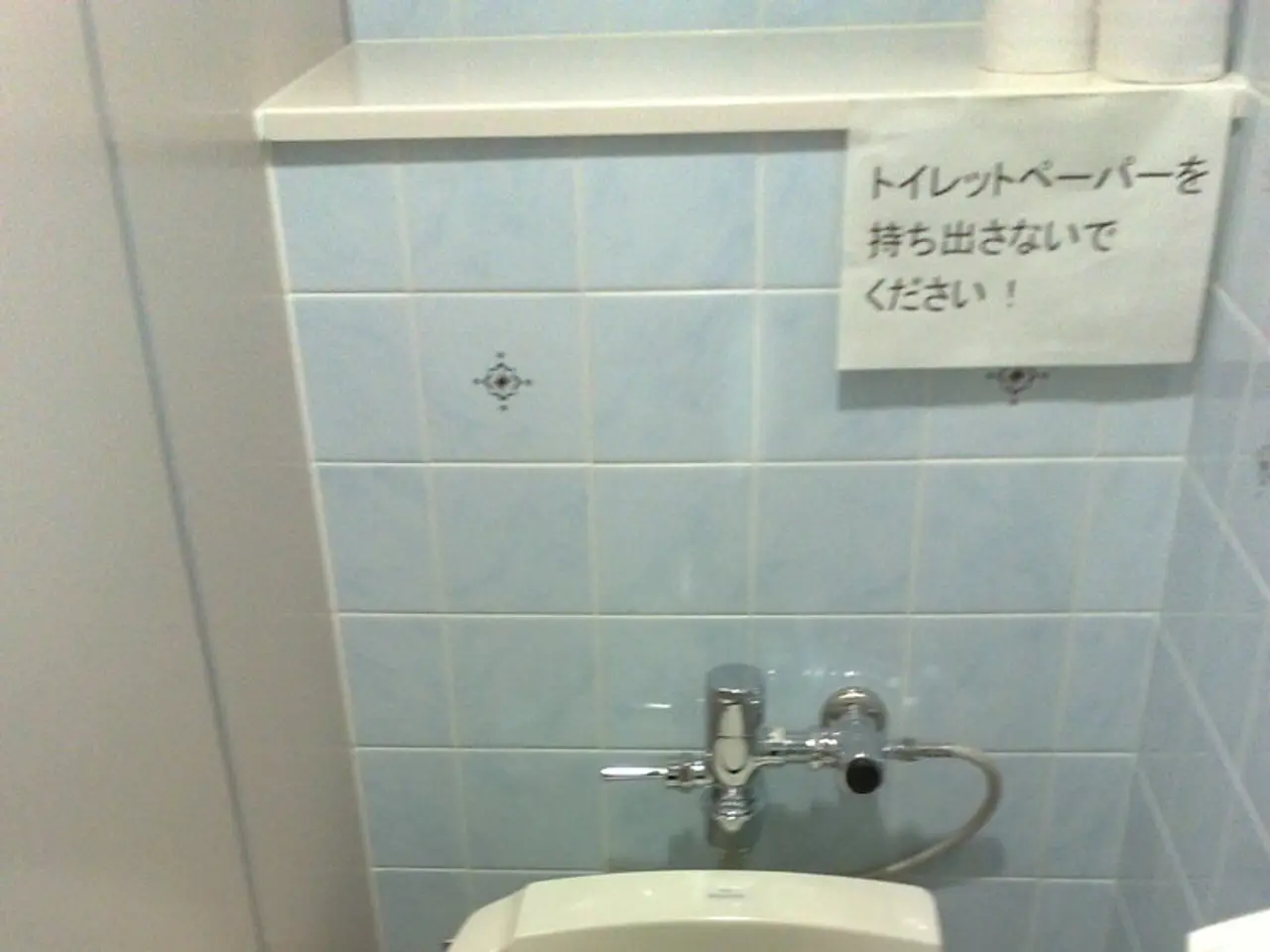Strategies to clear a clogged toilet without the need for a plunger, thereby preventing the need to summon a plumber, even offering a peculiar secret solution in the end.
Unclogging a Toilet Without a Plunger: Expert Advice on Common Household Methods
When faced with a blocked toilet, it's essential to act promptly to prevent water from rising and potentially overflowing. Galia Ivanova, the founder and CEO of Cleaning Estimate, offers advice on effective home methods using common household items.
Key Methods for Unclogging a Toilet
- Hot water and washing-up liquid: Pour about half a bottle of dish soap into the toilet bowl, then add a bucket of hot (not boiling) water. Let it sit for 20-30 minutes to soften the clog, then flush to clear.
- Bicarbonate of soda (baking soda) and vinegar: Add one cup baking soda into the bowl, followed by two cups white vinegar slowly. After the fizzing stops (about 30 minutes), pour a bucket of hot water and flush.
- Epsom salts: Pour a cup of Epsom salts into the toilet bowl and leave for 15 minutes. Then add four cups of warm water and flush. The magnesium sulfate reacts to break down waste.
- DIY auger with wire coat hanger: Straighten a wire coat hanger, wrap one end with cloth or tape to protect the porcelain, then gently insert into the drain and wiggle to break the clog near the trap. This is a last resort if no auger is available but may not reach deep clogs.
Alternative Solutions for Various Toilet Types
- Most toilets respond well to the hot water and soap, or baking soda and vinegar treatments because these methods do not damage porcelain or plumbing and work on organic clogs typical of standard and low-flow toilets.
- For toilets with tighter traps or pressure-assisted types, a toilet auger (a specialized plumbing snake) is safer and more effective than DIY tools, especially for deeper or stubborn clogs.
- Chemical drain cleaners are generally not recommended for toilets since many can corrode porcelain and plumbing; only use chemical or enzyme products explicitly marked safe for toilets and understand they work slowly.
- Avoid boiling water in any toilet type to prevent cracking the bowl.
Additional Tips and Cautions
- If Coca-Cola is used to unclog a toilet, it's recommended to go in with a toilet cleaner to ensure the area is properly cleaned, as Coca-Cola has acidic properties that can help remove stains but has no disinfectant properties.
- If the clog is caused by more insoluble materials, like wipes or other non-flushable items, waiting won't help and leaving it may make the problem worse.
- A toilet brush can be used as an alternative to a plunger in a pinch, and a wet/dry vacuum cleaner can be used to suck out the blockage, but it should be used as a last resort.
- Ivanova warns that using a drain snake can be messy and unpleasant.
- If washing up liquid is not available, washing powder or detergent can be used instead.
In conclusion, start with gentle, non-toxic treatments like hot soapy water or vinegar and baking soda for all toilet types. If these aren't effective and no plunger is available, consider using an auger or the wire hanger method carefully depending on your toilet’s design. Call a plumber if the clog persists or is too severe for DIY methods.
- When encountering clogs in the bathroom, a guide for home-and-garden enthusiasts suggests that a simple solution is pouring hot water and washing-up liquid into the toilet bowl, followed by a wait before flushing to clear it.
- For those living in a home with various toilet designs, it's essential to note that using a toilet auger (a specialized plumbing snake) is more effective for dealing with deeper or stubborn clogs in pressure-assisted types or those with tighter traps.
- Another design-conscious individual may find alternative solutions like using a DIY auger created with a wire coat hanger as a last resort when no professional tool is available, but it may not reach deep clogs.
- In the spirit of lifestyle improvements around the home, it's worth noting that a careful approach to clogged toilets involves starting with gentle, non-toxic methods like hot soapy water or vinegar and baking soda for all toilet types, and escalating to more aggressive measures such as a drain snake only if necessary.




